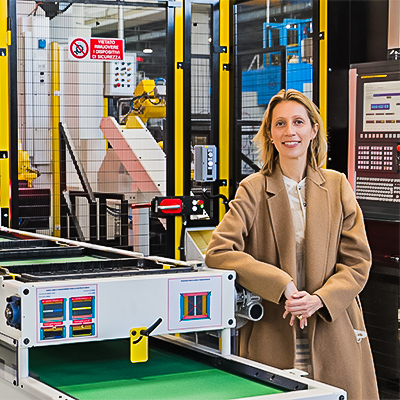Excellence in the world of transfer
 In 1955, Quirino Gnutti established Gnutti Transfer in Brescia for the construction of lathes and transfer machines. Over the years, the business has grown and evolved, integrating new flexible, modular and innovative concepts, while paying particular attention to machine design and production sustainability.
In 1955, Quirino Gnutti established Gnutti Transfer in Brescia for the construction of lathes and transfer machines. Over the years, the business has grown and evolved, integrating new flexible, modular and innovative concepts, while paying particular attention to machine design and production sustainability.
At the helm of the business today is Quirino's son, Renato Gnutti, currently company president and CEO. For 65 years, Gnutti Transfer has been synonymous with high levels of specialisation, precision and reliability. The company produces flexible bar turning transfer machines for the specialist machining of ferrous and non-ferrous materials, all customised and targeted to sectors that include plumbing, automotive, petrochemical, security and medical. Every year, Gnutti Transfer dispatches 35-40 machines from its Ospitaletto facility. With a turnover of €50 million and 220 employees, the company exports machines to 80 countries around the world.
“Gnutti Transfer is a highly vertical business. Unlike other transfer machine manufacturers, we are the only one with an integrated mechanical workshop” emphasises , Strategic Business Development Manager.
“For us, this is a huge strength, because we can control the entire production process from project launch, right through to its conclusion. We don’t rely on suppliers or subcontractors, and even at peak production times we succeed in managing the quality of our output effectively and efficiently.”
The company offers a 360° service, in pre-sales and after sales, always with the aim of prioritising and fully satisfying customer requirements. In fact, Gnutti Transfer has a dedicated service unit that has been supporting customers for more than 10 years, as well as a research and development division.